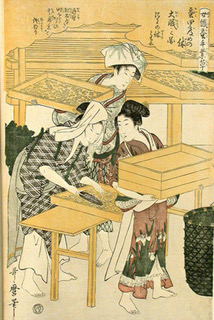Silk has been the finest fabrics over the years. Silk was discovered in 2640 BC by the third wife of the China’s emperor. While she was having tea underneath a mulberry tree in the garden, a small cocoon fell from the tree into her cup of hot tea. She was surprised to see the cocoon start to unravel, revealing a long delicate thread. Being intrigued by this fibre and its strength, she collected thousands of cocoons and wove the fibres into a robe for the Emperor. At first, he was the only one who had the privilege of wearing this beautiful fabric however; soon the members of the court were granted permission.
As silk was valued by people all over the world, it was also used as currency. China started trading silk outside of Asia through an Asian network and of trade routes known as the silk road.

For over 2,500 years, the secret of making silk has been kept by the Chinese. Eventually , the restrictions were removed and everyone could wear and produce silk. Later, silk production became huge.
Mulberry silk is constantly considered as the most costly type of silk. Its perfection and more grounded fibre, both show its remarkable characters. What makes it so costly and for what reason is it better than different kinds of silk? Allow me to begin by telling how mulberry silk is made.
Mulberry silk is produced using the silkworms of the Bombyx mori moth. The moth has one task to take care of and that is to lay eggs. After it lays around 500 eggs, its work is done and it passes on. The little pinpoint size eggs are kept at 65 degrees Fahrenheit with the temperature gradually and deliberately raised to 75 degrees Fahrenheit to incubate the eggs.

The small silkworms that are conceived are then taken care of a select eating routine of mulberry leaves 24 hours per day, 7 days every week (mulberry leaves are the solitary food the Bombyx mori moth will eat). After about a month of the consistent glutting on the mulberry leaves, the silkworms will have expanded their weight around multiple times and will have developed enough energy to begin turning their cover. It takes somewhere in the range of three to up to eight days for the silkworm to weave the case.
Written by: Priyanka Vohra

